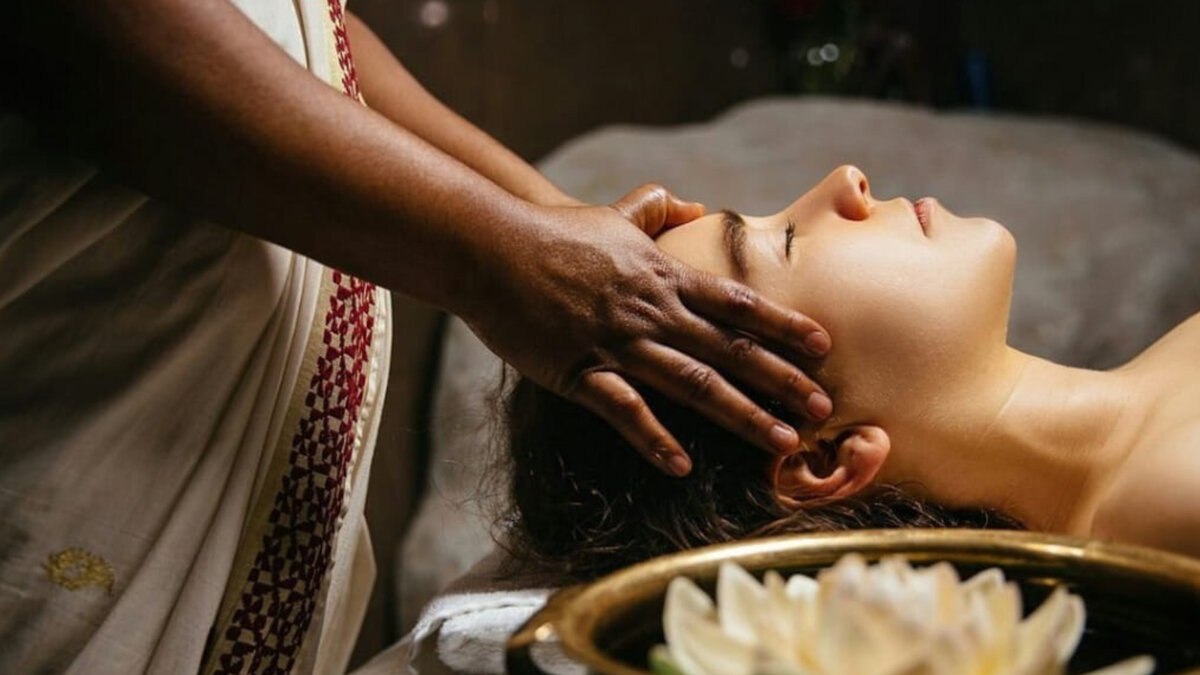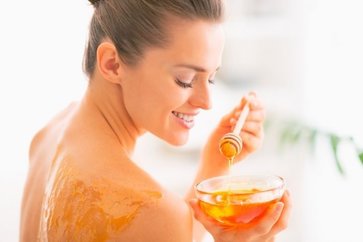Shiroabhyanga: An Indian Head Massage for Relaxation and Wellness
One ancient practice that has been cherished for centuries for its therapeutic benefits is “Shiroabhyanga Massage.” Rooted in Ayurveda, the traditional Indian system of medicine, this form of massage offers a deeply relaxing and rejuvenating experience that not only calms the mind but also nourishes the body.
Shiroabhyanga Massage, also known as Indian Head Massage, holds a special place in the heart of Ayurvedic healing traditions. Passed down through generations, this ancient technique has stood the test of time and continues to be celebrated for its profound effects on overall well-being.
Its origin can be traced back to ancient Indian mothers, who used to massage their children’s heads to promote hair growth, better sleep, and relaxation.
What is Shiroabhyanga?
Shiroabhyanga, also known as Indian Head Massage, is an ancient Ayurvedic practice that focuses on massaging the head, scalp, neck, and shoulders using therapeutic oils.
The word “Shiroabhyanga” is derived from two Sanskrit words – “Shiro” meaning head and “Abhyanga” meaning massage.
The technique is deeply rooted in Ayurveda, which believes in the balance of energies within the body for overall health and well-being.
The History of Shiroabhyanga
Shiroabhyanga dates back thousands of years to the ancient Indian healing traditions. It has been an integral part of Ayurveda and has been passed down through generations.
In the past, Indian mothers used to massage their children’s heads to promote hair growth, better sleep, and relaxation. Over time, this therapeutic practice evolved into what we now know as Shiroabhyanga.
Shiroabhyanga Meaning
The term “Shiroabhyanga” can be broken down into two parts: “Shiro” means head, and “Abhyanga” refers to a massage technique.
Thus, Shiroabhyanga Massage involves the art of massaging the head, scalp, neck, and shoulders to promote physical, mental, and emotional well-being. It is often referred to as “Indian Head Massage” in the Western world.
Shiroabhyanga Benefits
1. Stress Reduction and Relaxation
Shiroabhyanga is renowned for its ability to induce deep relaxation and alleviate stress and anxiety. The gentle and rhythmic strokes on the head and scalp help release tension, allowing the body and mind to unwind.
2. Improved Blood Circulation
The massage techniques used during Shiroabhyanga stimulate blood flow to the scalp and head region. This enhanced circulation ensures better oxygen and nutrient supply to the brain, which can improve cognitive function and overall vitality.
3. Nourished Scalp and Hair
By using therapeutic oils during the massage, Shiroabhyanga nourishes the scalp and hair. The oils help strengthen the hair roots, reduce hair fall, and improve the texture and shine of the hair.
4. Relief from Headaches and Migraines
Many individuals suffer from headaches and migraines due to stress and tension. Shiroabhyanga’s soothing massage movements can provide relief and reduce the frequency of such discomforts.
5. Balancing of Energies (Doshas)
According to Ayurveda, the three doshas – Vata, Pitta, and Kapha – govern the body’s harmony. Shiroabhyanga helps balance these energies, leading to improved overall health and vitality.
Shiroabhyanga Oil
The ingredients used in Shiroabhyanga oil can vary depending on the specific formulation and the practitioner’s preferences. However, traditional Shiroabhyanga oils often consist of a blend of natural and therapeutic ingredients. Some common ingredients found in Shiroabhyanga oil include:
1. Sesame Oil: Sesame oil is a popular base oil in Shiroabhyanga due to its nourishing and calming properties. It is especially beneficial for balancing Vata dosha.
2. Coconut Oil: Coconut oil is known for its cooling and soothing effects, making it suitable for balancing Pitta dosha. It adds a pleasant fragrance to the oil blend.
3. Almond Oil: Almond oil is rich in vitamins and nutrients that promote hair and scalp health. It is often used in Shiroabhyanga to nourish and strengthen the hair.
4. Castor Oil: Castor oil is known for its deep moisturizing properties. It can help combat dryness and flakiness of the scalp.
5. Bhringraj (Eclipta Alba) Extract: Bhringraj is an Ayurvedic herb known for its hair-strengthening and hair growth-promoting properties. Its extract is often added to enhance the oil’s benefits for the hair.
6. Brahmi (Bacopa Monnieri) Extract: Brahmi is another potent herb used in Ayurveda for its ability to improve cognitive function and reduce stress. Its extract is sometimes included in Shiroabhyanga oil to enhance its relaxation effects.
7. Rosemary Essential Oil: Rosemary essential oil is known for its invigorating and uplifting aroma. It can add a refreshing scent to the oil blend and may also have benefits for the scalp.
8. Lavender Essential Oil: Lavender essential oil is famous for its calming and soothing properties. It can contribute to the overall relaxation experience of the Shiroabhyanga massage.
9. Jasmine Essential Oil: Jasmine essential oil is used for its delightful floral fragrance, which can enhance the sensory experience of the massage.
Note: It’s important to note that individual practitioners and Ayurvedic experts may create their unique blends of Shiroabhyanga oil, incorporating different herbs and essential oils based on their client’s specific needs and dosha imbalances.
Before using any Shiroabhyanga oil, it’s advisable to check for any potential allergies or sensitivities to the ingredients.
Shiroabhyanga Procedure
The Shiroabhyanga Massage procedure typically involves the following steps:
1. Preparing the Massage Area: Creating a serene and comfortable environment is crucial for a successful Shiroabhyanga session. The massage area should be clean, quiet, and free from distractions.
2. Selecting the Right Oil: As mentioned earlier, choosing the appropriate oil is an essential aspect of Shiroabhyanga. The oil is warmed to a comfortable temperature before the massage begins.
3. Application of Oil: The practitioner applies the warm oil gently to the head, scalp, neck, and shoulders.
4. Massage Techniques: The therapist uses various massage techniques, such as effleurage, petrissage, and kneading, to stimulate the scalp, release tension, and promote relaxation.
5. Post-Massage Rest: After the massage, it is recommended to rest for a while, allowing the body to absorb the therapeutic benefits fully.
Shiroabhyanga Price
The cost of a Shiroabhyanga session can vary depending on factors such as the location, the expertise of the therapist, and the duration of the massage. In general, Shiroabhyanga is considered an affordable and accessible form of therapy.
| City | Average Price | Starting Price | Price Upto |
|---|---|---|---|
| Bangalore | Rs. 2345.00 | Rs. 1500.00 | Rs. 3000.00 |
| Chennai | Rs. 2500.00 | Rs. 2000.00 | Rs. 3000.00 |
| Mumbai | Rs. 2950.00 | Rs. 2950.00 | Rs. 2950.00 |
| New Delhi | Rs. 2562.00 | Rs. 1500.00 | Rs. 3250.00 |
| Pune | Rs. 2585.00 | Rs. 1250.00 | Rs. 5950.00 |
Shiroabhyanga Indications
Shiroabhyanga is beneficial for a wide range of individuals, including:
- Those experiencing stress, anxiety, and mental fatigue.
- Individuals seeking relaxation and rejuvenation.
- Those with scalp and hair issues such as hair fall, dryness, and dandruff.
- People with frequent headaches and migraines are caused by tension.
Shiroabhyanga Massage is a powerful and ancient healing technique that offers numerous benefits for the mind, body, and spirit.
This therapeutic practice, deeply rooted in Ayurveda, continues to be celebrated for its ability to promote relaxation, reduce stress, and improve overall well-being.
Who Can Benefit from Shiroabhyanga?
Shiroabhyanga is a versatile healing technique that can benefit various individuals, including:
1. Individuals with Stress and Anxiety
In today’s fast-paced life, stress and anxiety have become prevalent. Shiroabhyanga can offer a natural and effective way to relax and find respite from the pressures of everyday life.
2. People with Scalp and Hair Issues
If you’re struggling with hair-related problems like hair loss, dryness, or dandruff, Shiroabhyanga can be a supportive therapy for improving hair and scalp health.
3. Those Experiencing Headaches and Migraines
The calming effects of Shiroabhyanga can provide relief from headaches and migraines caused by stress or tension.
4. Ayurveda Enthusiasts
For those interested in exploring the depths of Ayurveda and its holistic practices, Shiroabhyanga can be a fascinating experience.
Precautions and Contraindications
Although Shiroabhyanga is generally safe, it may not be suitable for everyone. Some precautions and contraindications include:
- People with certain scalp conditions or open wounds should avoid the massage.
- Pregnant women should consult their healthcare provider before undergoing Shiroabhyanga.
- Those with a history of neck or spinal injuries should inform the practitioner beforehand.
Frequently Asked Questions (FAQs) on Shiroabhyanga
Is Shiroabhyanga Safe for Pregnant Women?
Yes, Shiroabhyanga is generally safe for pregnant women, but it’s essential to consult a qualified practitioner and inform them about your pregnancy before the session.
How Often Should I Get Shiroabhyanga?
The frequency of Shiroabhyanga sessions depends on individual needs. For general relaxation, once a week is recommended, but you can discuss a suitable schedule with your Ayurvedic practitioner.
Can I Perform Shiroabhyanga Myself at Home?
While self-massage can be beneficial, it may not provide the same experience as a professional Shiroabhyanga session. It’s best to seek the expertise of a trained practitioner for optimal results.
What Oils Are Best for Shiroabhyanga?
The choice of oils depends on your dosha type and specific needs. Popular choices include sesame oil, coconut oil, and almond oil.
How Long Does a Shiroabhyanga Session Usually Last?
A typical Shiroabhyanga session can last anywhere from 30 minutes to 1 hour, depending on the techniques used and individual preferences.
Shiroabhyanga Massage is a powerful and ancient healing technique that offers numerous benefits for the mind, body, and spirit. This therapeutic practice, deeply rooted in Ayurveda, continues to be celebrated for its ability to promote relaxation, reduce stress, and improve overall well-being.


























